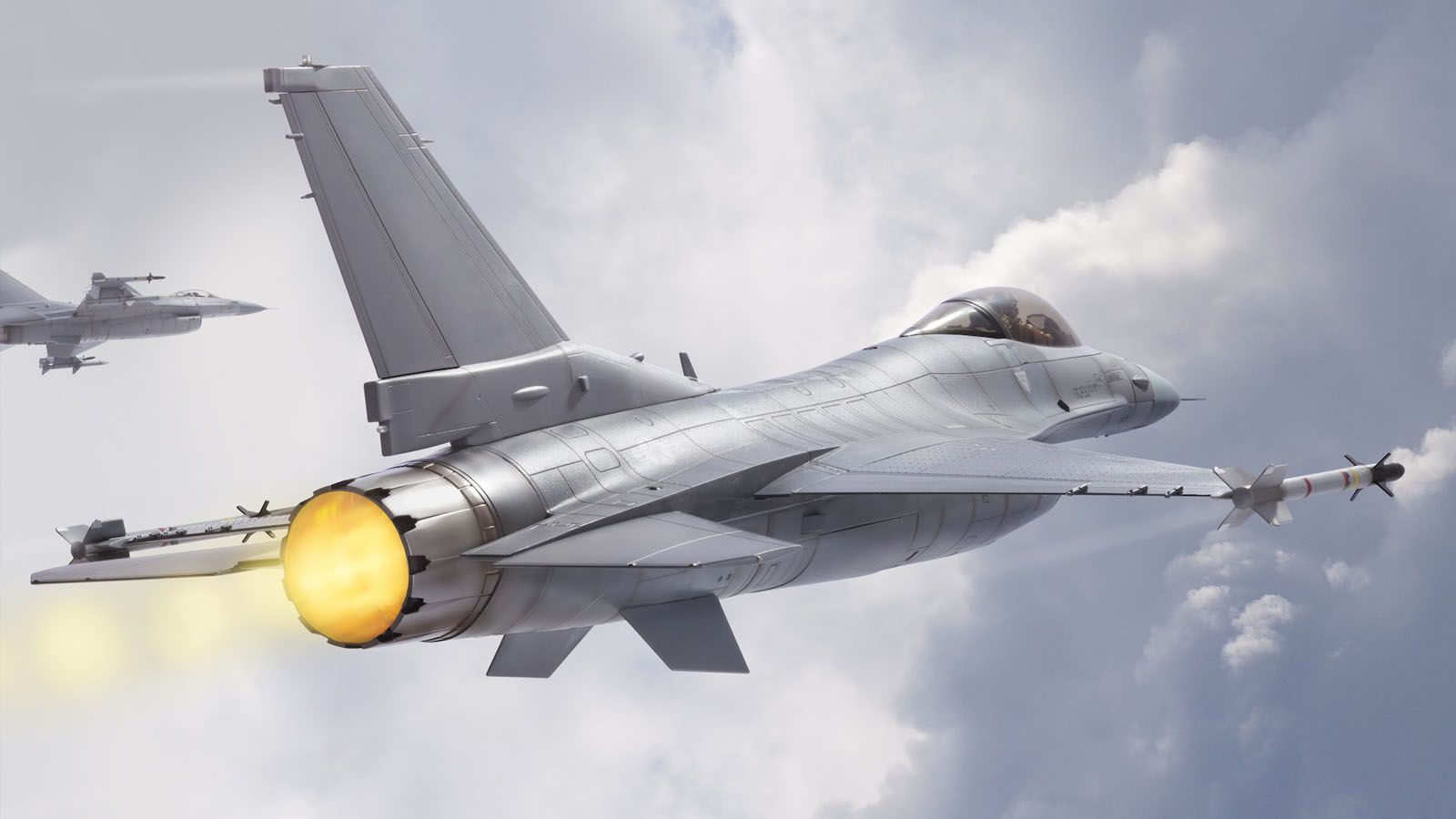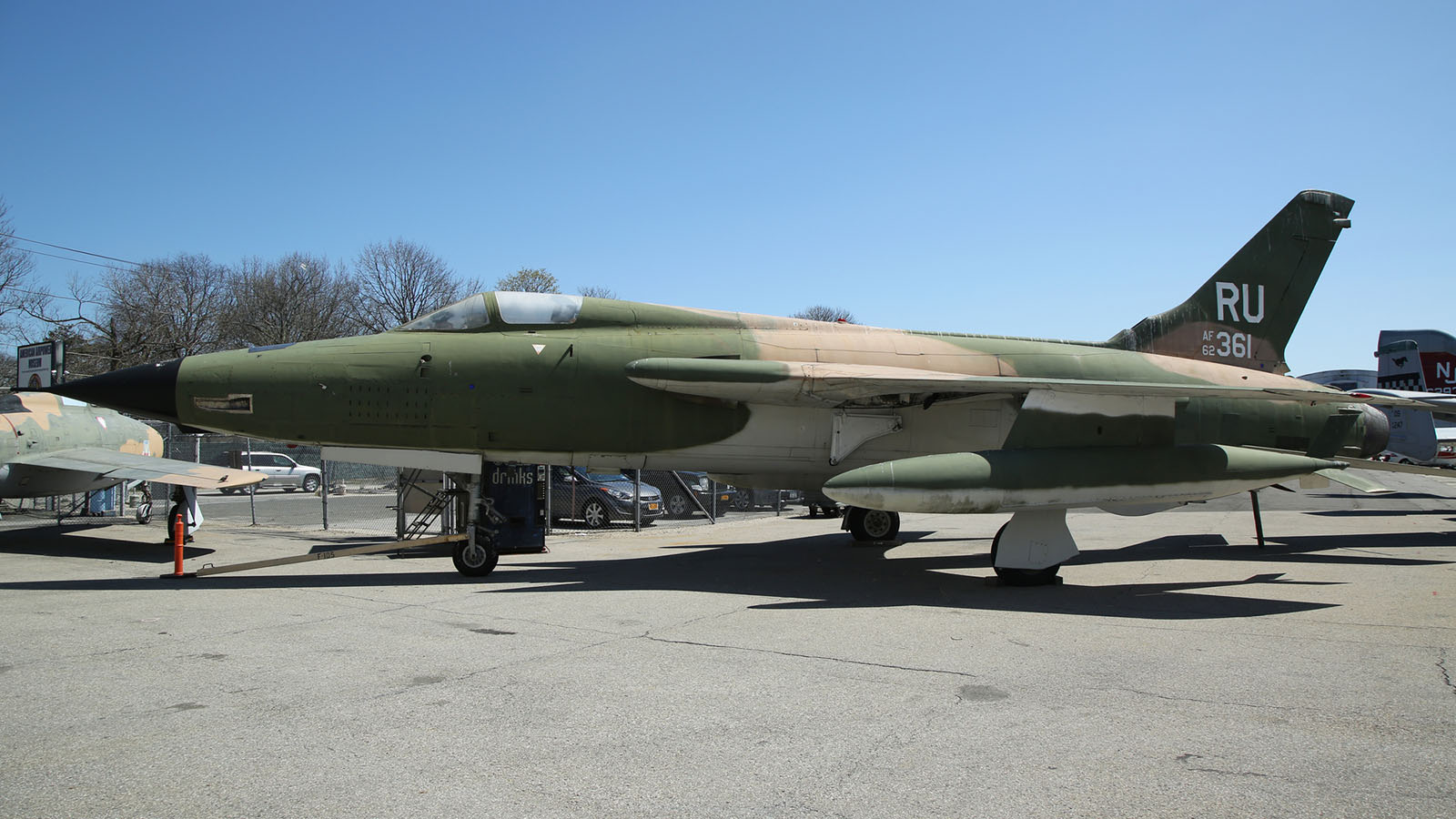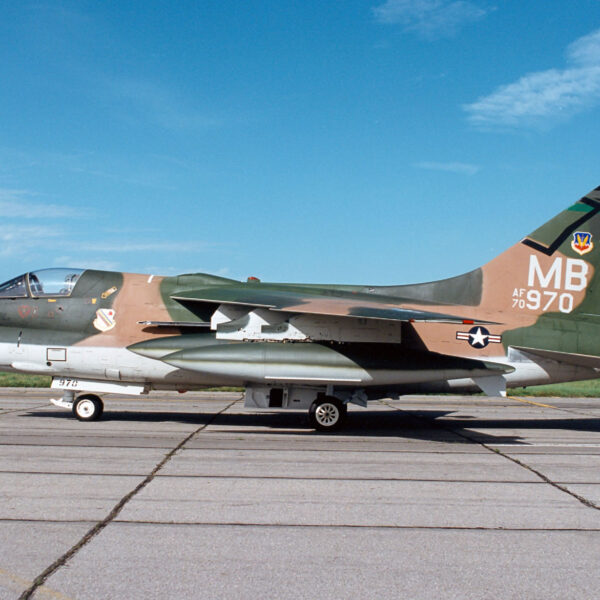“Unleash the power of speed and precision with the Lockheed F-104C Starfighter.”
Introduction
The Lockheed F-104C Starfighter is a supersonic, single-engine fighter aircraft developed by the American company Lockheed Corporation in the late 1950s. It was primarily designed as a high-speed, high-altitude interceptor for the United States Air Force (USAF) and later used by several other countries. The F-104C was known for its sleek and distinctive design, with a pointed nose and thin, swept-back wings. It also had a powerful engine and advanced avionics, making it one of the most advanced fighter jets of its time. Despite its initial success, the F-104C faced challenges and controversies during its service. However, it remains an iconic and influential aircraft in military aviation history.

TECHNICAL NOTES:
National Museum of the United States Air Force
Armament: One M-61 20mm cannon, two air-to-air missiles, nuclear or conventional bombs
Engine: General Electric J79 of 15,800 lbs. thrust with afterburner
Crew: One
Maximum speed: 1,320 mph
Cruising speed: 575 mph
Range: 1,250 miles
Ceiling: 58,000 ft.
Span: 21 ft. 11 in.
Length: 54 ft. 10 in.
Height: 13 ft. 6 in.
Weight: 27,853 lbs. maximum
Serial number: 56-914
History and Development of the Lockheed F-104C Starfighter
The Lockheed F-104C Starfighter is a legendary aircraft that has played a significant role in aviation history. Developed by the American aerospace company Lockheed, the F-104C was a supersonic interceptor aircraft primarily used by the United States Air Force (USAF) during the Cold War era. Its sleek design and impressive performance capabilities made it popular among pilots and aviation enthusiasts.
The development of the F-104C began in the late 1950s, with the USAF’s need for a high-speed, high-altitude interceptor aircraft. Lockheed’s chief engineer, Clarence “Kelly” Johnson, led the design team and developed a revolutionary concept – a small, lightweight aircraft with a powerful engine that could reach speeds of Mach 2. The F-104C was also equipped with advanced avionics and a sophisticated weapons system, making it a formidable opponent in the skies.
In 1958, the prototype of the F-104C took its maiden flight, an instant success. The aircraft’s exceptional speed and maneuverability impressed the USAF, and the F-104C was officially introduced into service in 1959. It quickly became known as the “missile with a man in it” due to its small size and rocket-like appearance.
One of the most significant milestones in the history of the F-104C was its participation in the Vietnam War. In 1965, the USAF deployed a squadron of F-104Cs to Southeast Asia to provide air support for ground troops. The F-104C’s speed and agility were crucial in evading enemy fire, and it was also used for reconnaissance missions. However, the F-104C’s lack of maneuverability at low speeds and its limited payload capacity made it vulnerable in combat, and it was eventually replaced by more advanced aircraft.
Despite its shortcomings in combat, the F-104C continued to serve in the USAF until the late 1970s. It was also used by other countries, including Canada, Japan, and Germany, where it was known as the “Widowmaker” due to its high accident rate.
In addition to its military use, the F-104C also significantly impacted the world of aviation. It set numerous speed and altitude records, including the world altitude record of 103,395 feet set by USAF pilot Joseph A. Walker in 1963. NASA also used the F-104C as a testbed for various experiments, including the X-15 rocket-powered aircraft.
Today, the F-104C is no longer in active service; its legacy lives on. It paved the way for future aircraft designs, and its advanced technology and capabilities were ahead of its time. The F-104C also inspired a generation of pilots and aviation enthusiasts, and its iconic design can still be seen in air shows and museums worldwide.

Notable Features and Capabilities of the F-104C Starfighter
The Lockheed F-104C Starfighter is a legendary aircraft that has left a lasting impact on the world of aviation. Designed and manufactured by the American aerospace company Lockheed Corporation, the F-104C was a single-engine, supersonic interceptor aircraft primarily used by the United States Air Force (USAF) during the Cold War era. It was known for its sleek and futuristic design, as well as its impressive speed and maneuverability. It had a long, slender fuselage with a pointed nose and swept-back wings, giving it a distinct appearance unlike any other aircraft of its time. The design was not only aesthetically pleasing, but it also served a functional purpose. The pointed nose and thin wings reduced drag, allowing the F-104C to achieve high speeds and easily perform sharp turns.
Speaking of speed, the F-104C Starfighter was renowned for its incredible speed and climb rate. It could reach a maximum speed of Mach 2.2, making it one of the fastest aircraft. Its powerful General Electric J79 engine made this possible, which produced a thrust of over 15,000 pounds. The F-104C could also climb to an altitude of 50,000 feet in just under two minutes, making it an ideal aircraft for intercepting enemy planes.
In addition to its speed and climb rate, the F-104C Starfighter was known for its exceptional maneuverability. Its high thrust-to-weight ratio allowed it to perform tight turns and quick maneuvers without losing speed. This made it a formidable opponent in air-to-air combat situations. The F-104C was also equipped with a sophisticated control system, allowing the pilot to fly the aircraft precisely and efficiently.
Another notable feature of the F-104C Starfighter was its advanced avionics and weapons systems. It was equipped with a radar system to detect and track multiple targets simultaneously, giving the pilot a tactical advantage in combat situations. The F-104C was also armed with various weapons, including air-to-air missiles, rockets, and bombs, making it a versatile aircraft that could perform a range of missions.
Despite its impressive features and capabilities, the F-104C Starfighter had flaws. One of the major criticisms of the aircraft was its high accident rate. Due to its high speed and demanding flight characteristics, the F-104C had a reputation for being a difficult aircraft to fly. This, coupled with its limited visibility from the cockpit, led to many accidents and fatalities during its service with the USAF.
Despite these challenges, the F-104C Starfighter played a significant role in the USAF’s defense strategy during the Cold War. It was used for various missions, including air defense, reconnaissance, and ground attack. It also saw action in the Vietnam War, where it was used for close air support and interdiction missions.
Impact and Legacy of the F-104C Starfighter
The Lockheed F-104C Starfighter, also known as the “Missile with a Man in It,” was a supersonic interceptor aircraft that played a significant role in military aviation during the Cold War era. Designed and manufactured by the American aerospace company Lockheed Corporation, the F-104C was primarily used by the United States Air Force (USAF) and exported to several other countries.
The F-104C Starfighter was first introduced in 1958 and quickly gained a reputation for its speed and maneuverability. With a maximum speed of Mach 2.2, it was one of the fastest aircraft. Its sleek design and powerful engine made it a formidable opponent in the skies. However, the F-104C had flaws, and its impact and legacy in military aviation are still debated today.
One of the most significant impacts of the F-104C Starfighter was its role in the Vietnam War. The USAF deployed the F-104C to Vietnam in 1965 for ground attack missions. Its speed and agility made it a practical aircraft for these missions and used for reconnaissance and escort duties. However, the F-104C’s lack of maneuverability at low speeds and high altitudes made it vulnerable to enemy fire, resulting in several losses. Despite this, the F-104C played a crucial role in the early years of the Vietnam War and paved the way for future fighter aircraft.
The F-104C Starfighter also significantly impacted the development of other aircraft. Its advanced aerodynamic design and powerful engine served as a basis for developing the F-16 Fighting Falcon, which is still used by many air forces worldwide. The F-104C’s success in the Vietnam War also influenced the design of the F-15 Eagle, which became one of the most successful fighter aircraft in history. The F-104C’s legacy can also be seen in the development of the Eurofighter Typhoon, which was designed with similar characteristics to the Starfighter.
Despite its impact on military aviation, the F-104C Starfighter also had a controversial legacy. Its high accident rate and the nickname “Widowmaker” sparked debates about its safety and reliability. The F-104C’s design, with its short wings and high thrust-to-weight ratio, made it challenging to handle, especially at low speeds. Combined with its high-speed capabilities, this resulted in several accidents, losing many pilots’ lives. The F-104C’s legacy in this aspect is still discussed among aviation enthusiasts and experts.
Another aspect of the F-104C’s legacy is its role in developing air combat tactics. The F-104C’s speed and maneuverability forced other countries to create new tactics to counter its capabilities. This led to developing new air-to-air combat techniques still used by modern fighter aircraft. The F-104C’s legacy in this aspect is evident in the training of pilots, who are taught to use similar tactics to outmaneuver their opponents.
In conclusion, the Lockheed F-104C Starfighter had a significant impact and legacy in military aviation. Its speed and maneuverability made it a formidable aircraft in the skies, and its role in the Vietnam War influenced the development of future fighter aircraft. However, its controversial safety record and the development of new air combat tactics also shaped its legacy. Despite its flaws, the F-104C Starfighter remains an iconic aircraft in the history of military aviation and continues to be studied and admired by aviation enthusiasts and experts alike.











